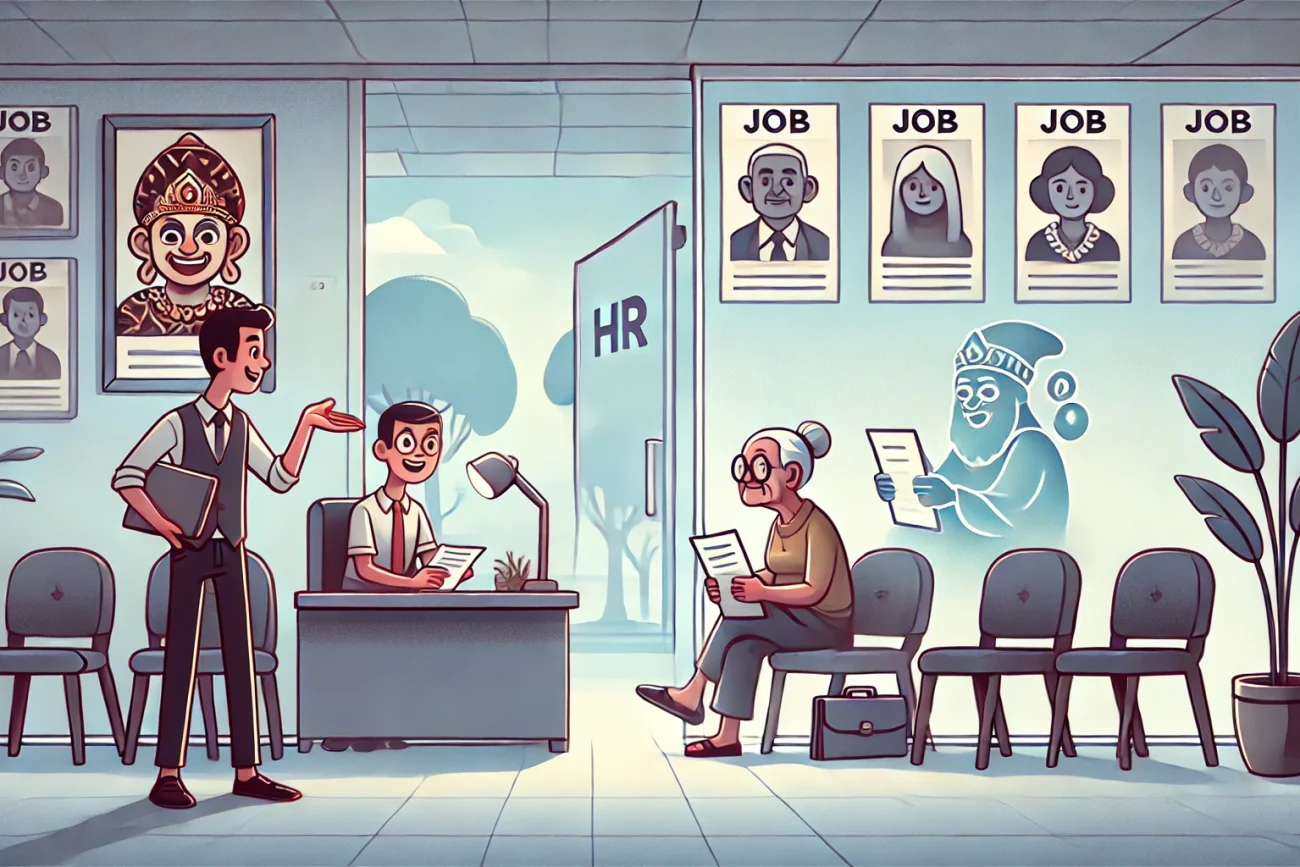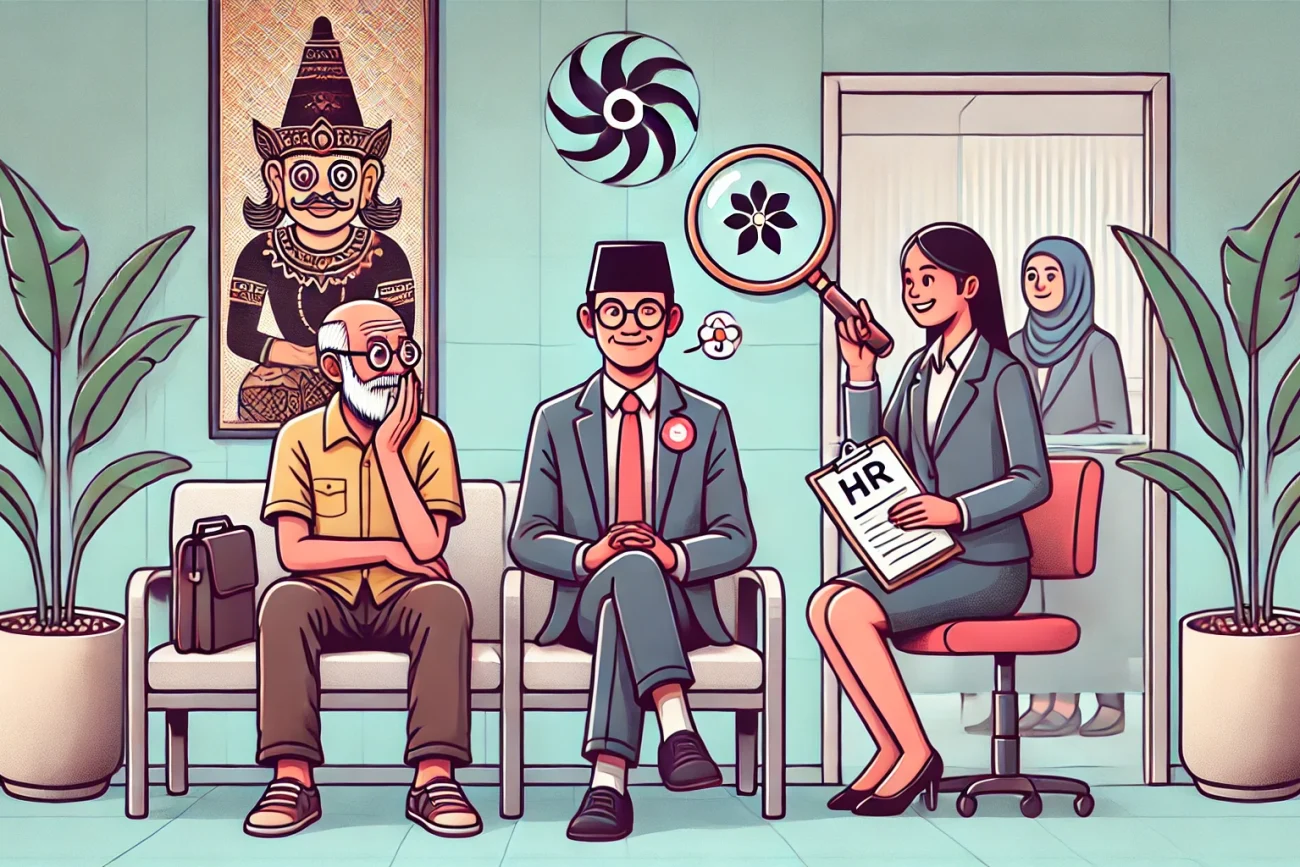In May 2025, the Ministry of Manpower introduced Circular Letter No. M/6/HK.04/V/2025 as part of the broader new hiring rules in Indonesia for 2025. This circular formally discourages employers from including age requirements in job postings in Indonesia, framing the practice as discriminatory. At a glance, this appears to be a progressive step toward dismantling long-standing Indonesian hiring discrimination, particularly the routine exclusion of older applicants in job ads.
However, its actual impact depends on more than just language. The minister of manpower circular 2025 does not create enforceable obligations. It merely recommends best practices without providing legal tools to challenge non-compliance. It deals primarily with the age discrimination in Indonesian job ads but avoids addressing what happens after the ad is posted: how candidates are shortlisted, interviewed, and ultimately selected. The deeper age bias in recruitment in Indonesia lies in these unregulated stages of the process.
This article examines both the symbolic importance and practical limitations of the policy. It invites readers to consider whether the circular can serve as the first step toward meaningful reform or whether it merely gives the appearance of change, while the core structures of job ad discrimination in Indonesia remain intact.
"Removing age limits from job ads is a start, but real progress demands confronting the systems that quietly preserve bias behind the scenes."
The Circular Letter: What It Is and Why It Matters
The Minister of Manpower Circular 2025 (SE Menaker No. M/6/HK.04/V/2025) represents a noteworthy policy signal in Indonesia’s evolving employment landscape. While not legally binding, the circular is a formal advisory issued to shape employer behavior, particularly regarding fairness in the hiring process. It urges organizations to remove discriminatory language from job advertisements, specifically prohibiting criteria based on age, gender, physical appearance, and marital status.
The circular aims to curb age requirements in job postings in Indonesia, a long-standing and pervasive issue. Many Indonesian job ads have historically included exclusions like “under 30 only” or “single female preferred,” creating barriers for qualified applicants who fall outside arbitrary categories. While such phrasing might seem outdated or superficial, it reflects a broader pattern of age discrimination in Indonesian job ads and a recruitment culture that favors conformity over capability.
This is not the country’s first attempt to discourage workplace discrimination. Article 5 of the Labor Law No. 13/2003 already outlines general principles against unfair treatment, yet its application in recruitment remains weak. Employers have operated with relative impunity when it comes to job ad discrimination in Indonesia, partly due to a lack of enforcement mechanisms and clear accountability.
In this context, the circular carries symbolic weight. It publicly affirms that exclusionary hiring practices are inconsistent with the state’s policy vision. However, its influence is ultimately limited. Without the force of law, penalties for non-compliance, or a system of monitoring and reporting, the circular functions more as a statement of intent than a regulatory mandate. It scratches the surface of a deeper structural problem and leaves much of the machinery behind Indonesian hiring discrimination untouched. For this initiative to lead to meaningful change, it must be followed by legislative action and institutional commitment.
Discrimination Doesn’t Live in Job Ads. It Lives in Systems
While the removal of age requirements in job postings in Indonesia may appear progressive, it addresses only the most visible layer of a much deeper issue. The job advertisement is the public-facing side of recruitment, but discrimination is rarely confined to what is written. The real decisions happen behind the scenes, shaped by long-standing practices and internal processes that remain largely unregulated.
Even when a job ad avoids explicit bias, employers can still exclude candidates through indirect means. Recruiters may quietly scan resumes for birth years or graduation dates, ask inappropriate questions during interviews, or make judgments based on unspoken assumptions. The notion that older candidates are less adaptable or less capable of learning new technologies is still deeply embedded in hiring culture. These patterns reflect a structural form of Indonesian hiring discrimination, not just isolated prejudice.
Efforts to ban age discrimination in Indonesian job ads will fall short unless they are part of a broader overhaul of recruitment systems. This includes implementing blind hiring processes, where identifying details are removed from applications, as well as revising AI-driven screening tools that often inherit bias from past data. Structured interviews and documented evaluation criteria can help create consistency, but without legal accountability, employers face little pressure to change.
So while the new hiring rules in Indonesia in 2025 signal a policy shift, they do not yet require systemic transformation. Without enforcement mechanisms, training programs, or data transparency, job ad discrimination in Indonesia will likely continue—just in subtler forms. Addressing the language of job postings is a necessary step, but on its own, it does not alter the systems where real discrimination takes place. Change will require going far beyond the job board.
Where Policy Meets Performance: Gaps in Implementation
While the new hiring rules in Indonesia in 2025, introduced through the minister of manpower circular 2025, mark a symbolic shift in addressing employment discrimination, significant implementation gaps remain. Critics have not held back, with some dismissing the move as performative or populist. While blunt, this criticism reflects real structural weaknesses in the circular’s design and rollout.
First, the circular lacks legal enforceability. It does not sit within the formal legal framework and carries no sanctions. Employers who continue to use age requirements in job postings in Indonesia face no real consequences. The absence of penalties or legal recourse means that companies are left to comply voluntarily. In a competitive labor market, many will not.
Second, the state itself fails to model compliance. Numerous government bodies and state-owned enterprises continue to include explicit age and appearance criteria in their recruitment. This undermines the credibility of the circular and signals weak institutional commitment. Telling the private sector to change without first changing internal practice diminishes the directive’s influence.
Third, the uneven spread of reform across sectors and regions poses a challenge. Large multinationals may align with the circular due to internal DEI standards or international scrutiny. But small businesses in regional areas, where awareness and accountability are lower, are far less likely to comply. Without targeted outreach, these reforms will remain concentrated in urban centers, leaving much of the country untouched.
Finally, digital job platforms continue to facilitate discrimination. Even if job ads appear neutral, platform filters often still allow employers to sort applicants by age. This reinforces job ad discrimination in Indonesia at a structural level. Unless the government works directly with platforms to revise these tools, Indonesian hiring discrimination will persist quietly in the algorithms that shape who even gets seen.
Reframing the Problem: From Populism to Structural Equity
If the goal is to meaningfully address age requirements in job postings in Indonesia, then the solution must go beyond superficial corrections. Rewriting job ad language is not enough. What is needed is a broader transformation of the entire recruitment ecosystem—one that replaces symbolic gestures with enforceable standards and measurable accountability.
First, anti-discrimination principles must be codified into law. While the minister of manpower circular 2025 sets a moral tone, it lacks legal weight. The government must define age, gender, and appearance-based discrimination in clear terms and establish penalties for violations. Without legal backing, the risk of noncompliance remains high, especially in sectors with minimal oversight.
Second, the systems used to evaluate applicants must be audited. This includes both human processes and automated systems such as AI screening tools. These technologies often replicate bias from historical data. A formal auditing mechanism would help identify patterns of Indonesian hiring discrimination that persist outside of job ads.
Training plays a critical role. HR professionals need mandatory, practical instruction on inclusive hiring—not just in theory, but in the operational realities of shortlisting, interviewing, and performance evaluation. In parallel, employees must be given safe, confidential channels to report discrimination.
Just as important, the public sector must lead by example. Until CPNS and BUMN recruitment practices align with the inclusive values expressed in the circular, the private sector will have little reason to treat these changes as serious or permanent.
Finally, change must happen in the culture itself. Common assumptions about age, gender, and appearance continue to shape recruitment decisions. These biases must be actively challenged through education, public awareness, and leadership advocacy.
Addressing job ad discrimination in Indonesia starts with policy, but it ends with a commitment to rebuild the system from the ground up.
The move to eliminate age requirements in job postings in Indonesia is a necessary acknowledgement of a long-standing issue. By targeting exclusionary criteria in job ads, the minister of manpower circular 2025 takes an important symbolic stance. It recognizes that many applicants are unfairly screened out based not on merit, but on arbitrary traits like age, gender, or appearance. For many, this circular signals progress.
However, its scope is limited. The policy addresses what is easy to see—age discrimination in Indonesian job ads—while leaving unchallenged the deeper systems that allow such bias to persist. The real decisions that shape a candidate’s chances happen long after the ad is posted, within informal networks, unconscious bias, and unchecked recruitment practices. This is where age bias in recruitment in Indonesia quietly operates.
Tackling Indonesian hiring discrimination requires more than editing job listings. It demands systemic reforms, enforceable laws, data-driven accountability, and cultural change within organizations. Without these, the policy risks being little more than a public statement without meaningful impact.
Recognizing discrimination is only the first step. Real progress lies in the willingness to confront it fully, not just where it is visible, but where it is most entrenched.
Want to align with the Minister of Manpower Circular 2025?
We offer targeted assessments and practical support to ensure compliance. Book a discovery call

